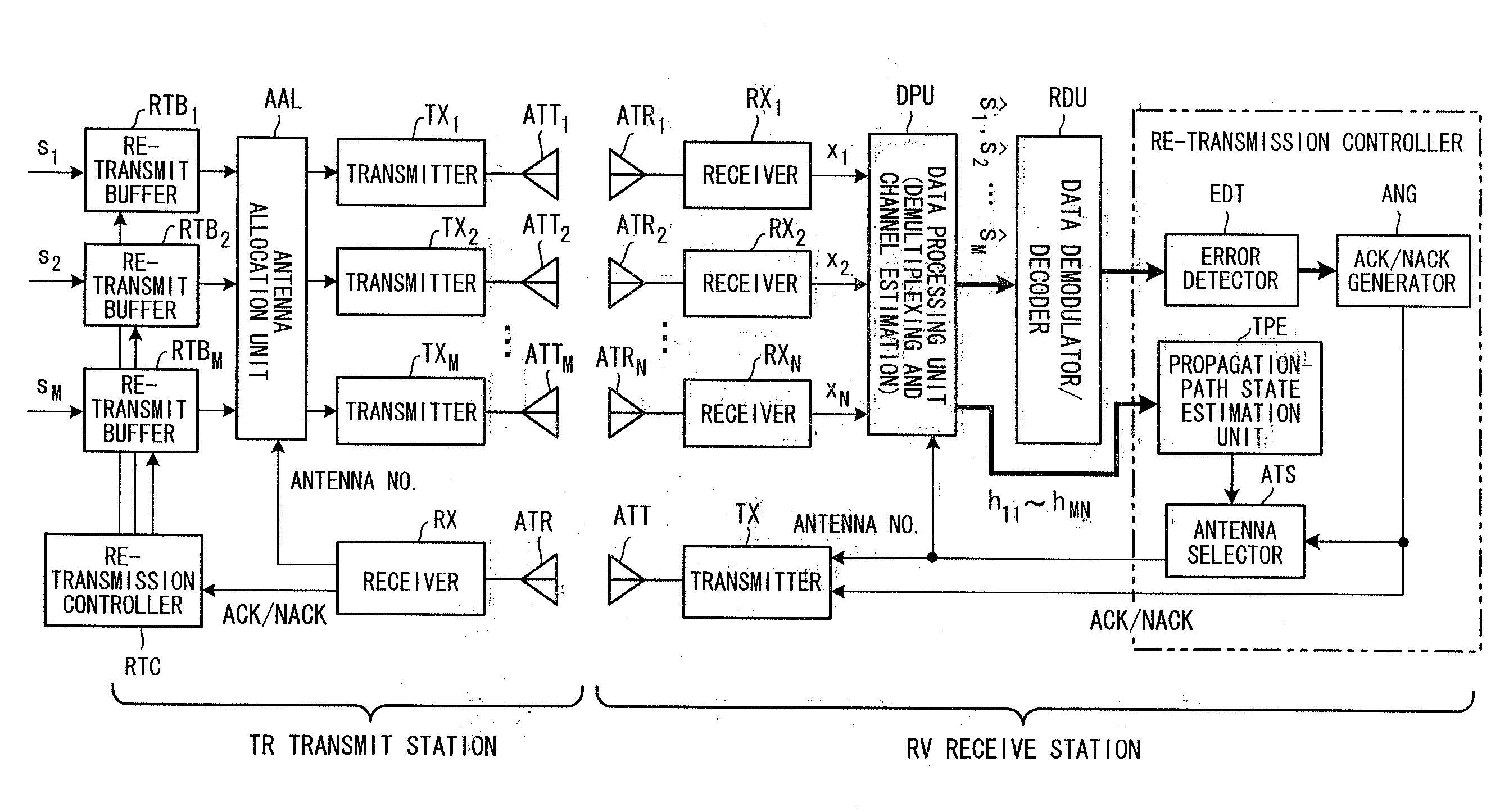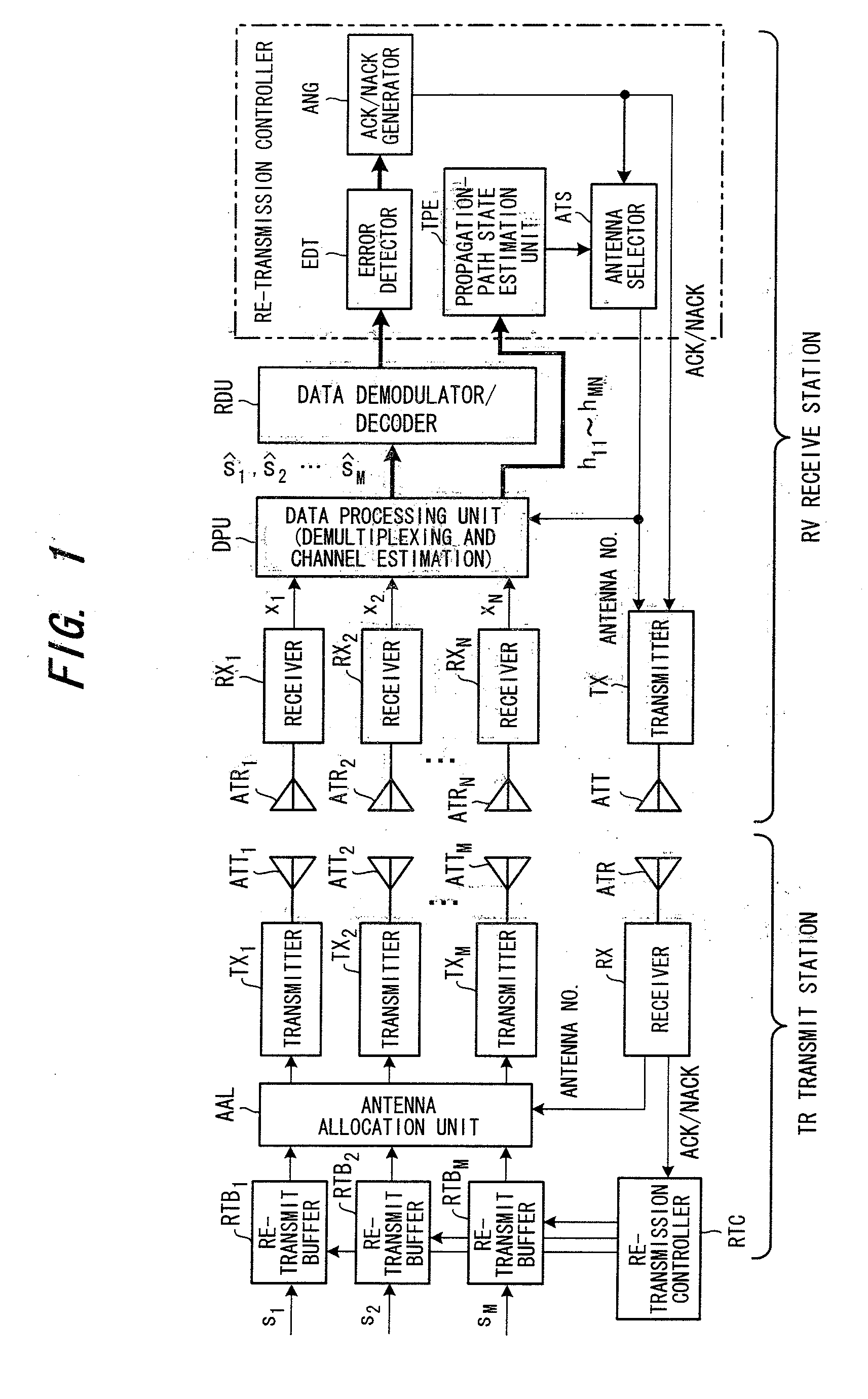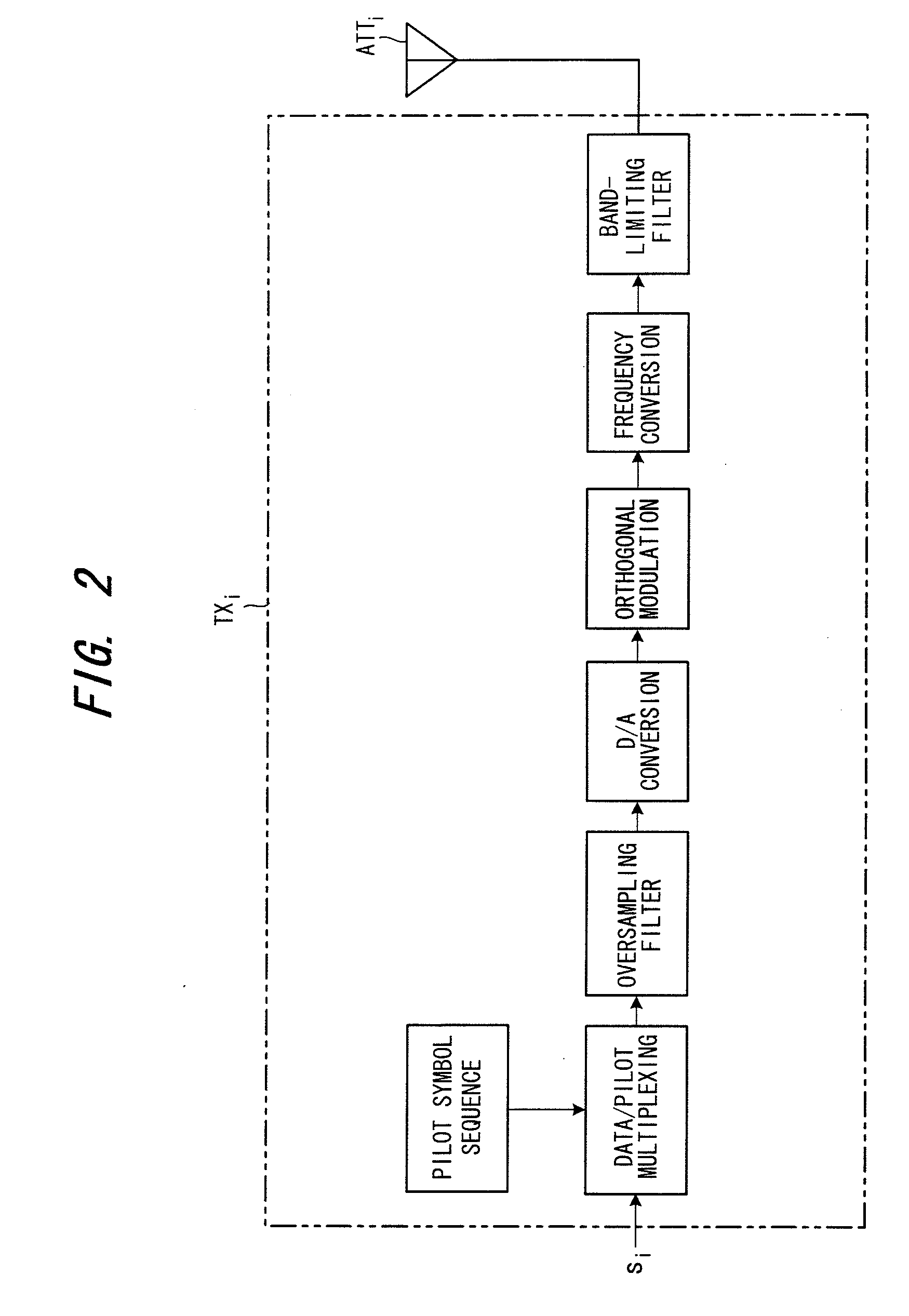Multiple-Input Multiple-Output Transmission System
a transmission system and multi-input technology, applied in the field of transmission systems, can solve the problems of increasing so as to achieve the effect of raising the retransmission efficiency and reducing the cost of transmission repeating
- Summary
- Abstract
- Description
- Claims
- Application Information
AI Technical Summary
Benefits of technology
Problems solved by technology
Method used
Image
Examples
first embodiment
(A) First Embodiment
[0044]FIG. 1 is a diagram illustrating the architecture of a multiple-input multiple-output transmission system according to a first embodiment, FIG. 2 is a diagram illustrating the structure of a transmitter in the multiple-input multiple-output transmission system, and FIG. 3 is a diagram illustrating the structure of a receiver in the multiple-input multiple-output transmission system. Components identical with those of the example of the prior art are designated by like reference characters.
[0045]Overview of First Embodiment
[0046]A first embodiment detects ACK / NACK for every data stream in the receive station RV and, at the same time, estimates the state of the propagation path for every antenna using pilot symbols orthogonally multiplexed for every transmit antenna. Usually a data stream for which ACK will hold is transmitted from an antenna for which the state of the propagation path is good, and a data stream for which NACK will hold is transmitted from an...
second embodiment
(B) Second Embodiment
[0058]FIG. 6 is a diagram illustrating the architecture of a multiple-input multiple-output transmission system according to a second embodiment. Components identical with those of the first embodiment are designated by like reference characters.
[0059]Overview of Second Embodiment
[0060]In the first embodiment, a transmit antenna that is to re-transmit a NACK data stream is decided by the antenna selector ATS and reported to the transmit station. In the second embodiment, however, the state of the propagation path is transmitted to the transmit station. On the basis of the state of the propagation path, an antenna selector ATSL in the transmit station decides the transmit antenna that is to perform re-transmission.
[0061]More specifically, in the first embodiment, the arrangement is such that the antenna used in re-transmission is decided by the receive station. In the second embodiment, however, the arrangement is such that the antenna is decided by the transmit ...
third embodiment
(C) Third Embodiment
[0067]FIG. 7 is a diagram illustrating the structure of a receiver according to a third embodiment. This embodiment differs from the second embodiment in that a re-transmission combiner RTC is provided. It should be noted that although the transmit station is not illustrated, it has a structure identical with that of the second embodiment.
[0068]In order to improve the reception quality of the re-transmission signal, the re-transmission combiner RTC combines the re-transmission packet and a packet transmitted previously and for which NACK was detected. That is, an error-containing packet for which reception has failed and a re-transmission request (NACK information) been issued is stored in a re-transmission combining buffer by the re-transmission combiner RTCB. When a packet (data stream) that has been re-transmitted is received, the re-transmission combiner RTCB combines the re-transmission packet and the packet (data stream) inside the buffer. By thus combining...
PUM
 Login to View More
Login to View More Abstract
Description
Claims
Application Information
 Login to View More
Login to View More - R&D
- Intellectual Property
- Life Sciences
- Materials
- Tech Scout
- Unparalleled Data Quality
- Higher Quality Content
- 60% Fewer Hallucinations
Browse by: Latest US Patents, China's latest patents, Technical Efficacy Thesaurus, Application Domain, Technology Topic, Popular Technical Reports.
© 2025 PatSnap. All rights reserved.Legal|Privacy policy|Modern Slavery Act Transparency Statement|Sitemap|About US| Contact US: help@patsnap.com



